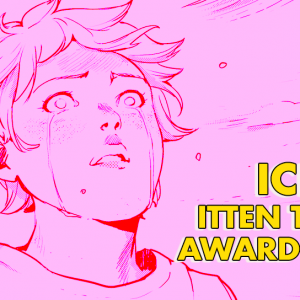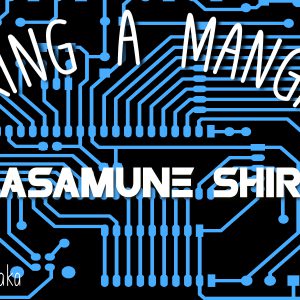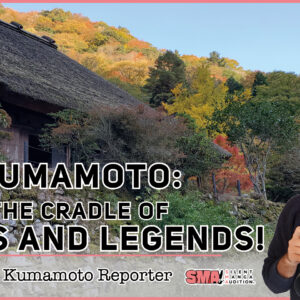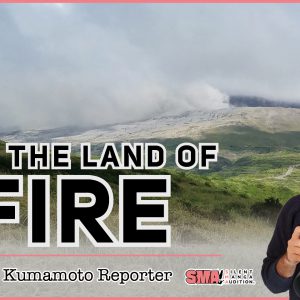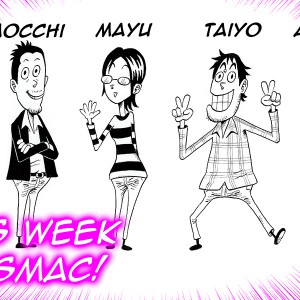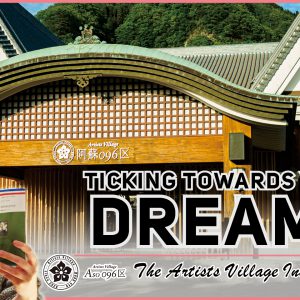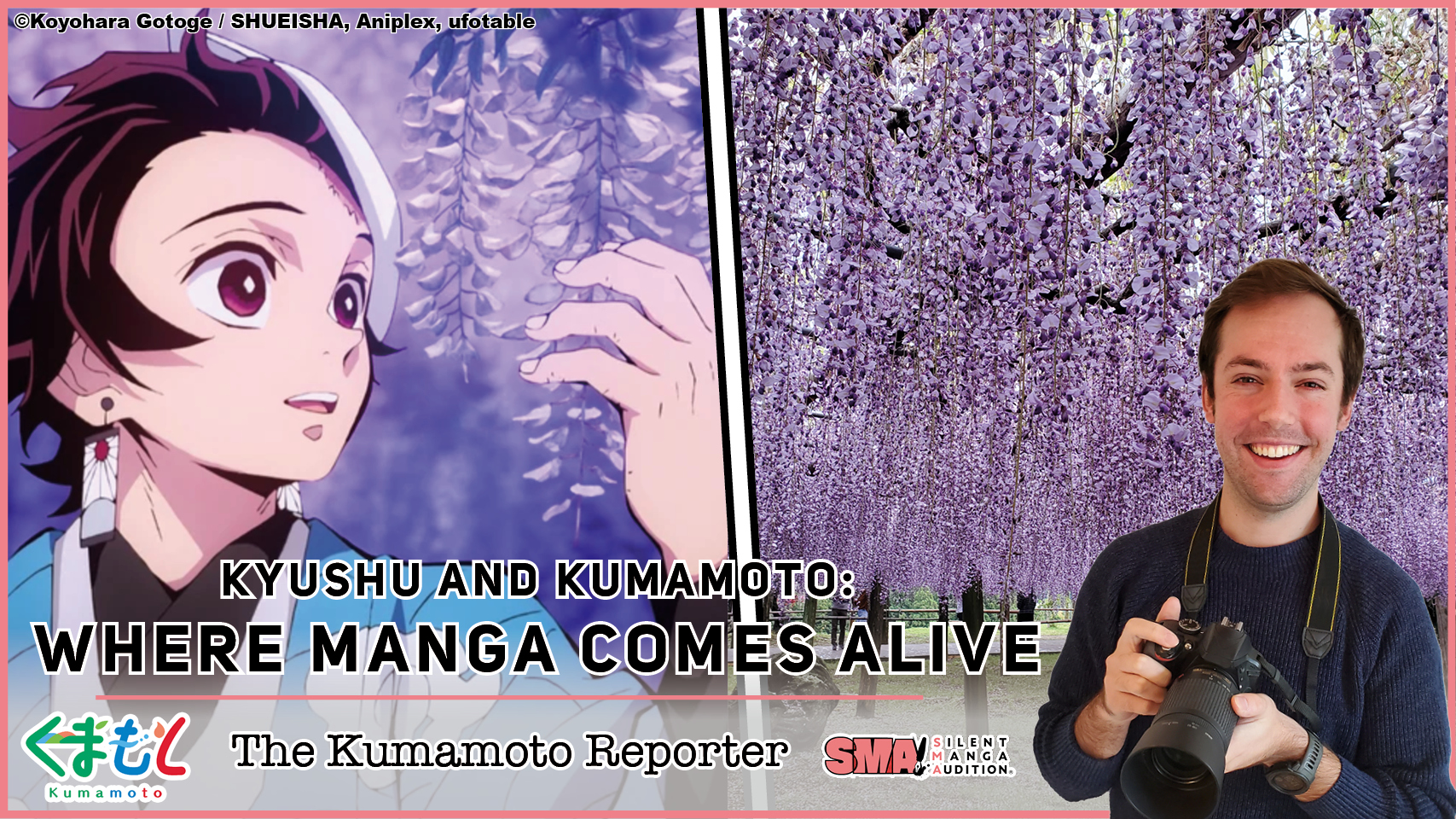
The Kumamoto Reporter #04 – Kumamoto and Kyushu: Where Manga Comes Alive
19/01/2022
13 min read
Discover famous manga and anime spots in Kumamoto and Kyushu with the Kumamoto Reporter!
Welcome back SMA community, and happy new year from the Kumamoto Reporter! Last time we got to know Kumamoto’s manga artists legends and learned what exactly makes Kumamoto such a great place for producing manga artists. Overflowing with natural beauty and candid moments of countryside and city life, Kumamoto is the perfect inspiration for manga artists…so much so that some manga and anime actually include scenes based on real places in Kumamoto! Grab your camera and hold on tight, we’re taking a road trip through Kumamoto and Kyushu in search of famous manga and anime spots. “Natsume’s Book of Friends” (Hitoyoshi and the Kuma region) Beautiful nature? Charming countryside? Legends of mysterious “Yokai” (Japanese spirits)? Yuki Midorikawa’s hometown of Hitoyoshi and the Kuma region in southern Kumamoto was the perfect inspiration for the setting of her manga “Natsume’s Book of Friends.” Midorikawa drew real life locations from around her hometown to bring Natsume and Nyanko-sensei’s supernatural adventures to life. Kamishikimi Kumanoimasu Shrine, a famous and peaceful moss-covered shrine in Takamori, Aso that’s close to the Artists Village Aso 096k, is also shown in Midorikawa’s one-shot manga and anime “Into the Forest of Fireflies’ Light.” “Rurouni Kenshin” live-action movies (Yamaga, Arao, Uto, and Hitoyoshi)
Unfortunately Kenshin’s adventures never brought him to Kumamoto, but the video shooting of his live-action movies did. The traditional theater Yachiyoza in Yamaga, the late Meiji-period Mitsui Miike Coal Mine in Arao, the Misumi West Port’s Old Uto County Office in Uto, and the Hitoyoshi Engine Shed in Hitoyoshi are all featured in the movie. Wandering around these historical properties brings you back to the time of the samurai.
“Rurouni Kenshin” live-action movies (Yamaga, Arao, Uto, and Hitoyoshi)
Unfortunately Kenshin’s adventures never brought him to Kumamoto, but the video shooting of his live-action movies did. The traditional theater Yachiyoza in Yamaga, the late Meiji-period Mitsui Miike Coal Mine in Arao, the Misumi West Port’s Old Uto County Office in Uto, and the Hitoyoshi Engine Shed in Hitoyoshi are all featured in the movie. Wandering around these historical properties brings you back to the time of the samurai.
 “Demon Slayer” (Kitakyushu, Dazaifu, and Beppu)
The beautiful Kawachi Wisteria Garden in Kitakyushu seems like it’s been pulled straight out of the pages of “Demon Slayer.” With a huge variety of different colored wisteria flowers, you can see the iconic purple variety that appears during Tanjirō’s induction into the Demon Slayer Corps. But be careful; unlike in the manga, they bloom only at the end of April/beginning of May in Kyushu.
“Demon Slayer” (Kitakyushu, Dazaifu, and Beppu)
The beautiful Kawachi Wisteria Garden in Kitakyushu seems like it’s been pulled straight out of the pages of “Demon Slayer.” With a huge variety of different colored wisteria flowers, you can see the iconic purple variety that appears during Tanjirō’s induction into the Demon Slayer Corps. But be careful; unlike in the manga, they bloom only at the end of April/beginning of May in Kyushu.
 Hōmangū Kamado Shrine in Dazaifu, Fukuoka shares its name with protagonist Tanjirō Kamado, but Fukuoka born “Demon Slayer ” creator Koyoharu Gotōge may have borrowed more than just the name. The shrine was first established in the 7th century to ward off demons and is located at the foot of a mountain, which Shugen-dō followers use to train. They sometimes wear checkered jackets and Tengu-masks, just like Tanjirō and his teacher Urokodaki-san!
Hōmangū Kamado Shrine in Dazaifu, Fukuoka shares its name with protagonist Tanjirō Kamado, but Fukuoka born “Demon Slayer ” creator Koyoharu Gotōge may have borrowed more than just the name. The shrine was first established in the 7th century to ward off demons and is located at the foot of a mountain, which Shugen-dō followers use to train. They sometimes wear checkered jackets and Tengu-masks, just like Tanjirō and his teacher Urokodaki-san!
 Hachiman Kamado Shrine in Beppu also shares its name with Tanjirō Kamado and the ceiling has artwork of a water dragon god, which may have been the inspiration for one of Tanjirō’s water-breathing moves. There’s also a legend that demons once terrorized and ate people in the area, so the gods challenged the demons to build 100 steps to the shrine before sunrise. If the demons succeeded then they would get a human sacrifice, but if not then they would have to flee. They built 99 steps, but then the first rays of sun appeared and they fled.
Hachiman Kamado Shrine in Beppu also shares its name with Tanjirō Kamado and the ceiling has artwork of a water dragon god, which may have been the inspiration for one of Tanjirō’s water-breathing moves. There’s also a legend that demons once terrorized and ate people in the area, so the gods challenged the demons to build 100 steps to the shrine before sunrise. If the demons succeeded then they would get a human sacrifice, but if not then they would have to flee. They built 99 steps, but then the first rays of sun appeared and they fled.
 “Princess Mononoke” (Yakushima)
There’s Studio Ghibli movie spots scattered all throughout Kyushu, but perhaps the most famous is the island of Yakushima in Kagoshima Prefecture. An island that is known for its unique climate and geography, it’s easy to see the similarities between its beautiful nature and the world of “Princess Mononoke.” In particular, the moss-covered forest of Shiratani Unsuikyo and giant cedar trees make you feel like you’ve stepped into that magical world. Yakushima is also known for its unique subspecies of deer and monkey, which live in harmony with each other.
“Princess Mononoke” (Yakushima)
There’s Studio Ghibli movie spots scattered all throughout Kyushu, but perhaps the most famous is the island of Yakushima in Kagoshima Prefecture. An island that is known for its unique climate and geography, it’s easy to see the similarities between its beautiful nature and the world of “Princess Mononoke.” In particular, the moss-covered forest of Shiratani Unsuikyo and giant cedar trees make you feel like you’ve stepped into that magical world. Yakushima is also known for its unique subspecies of deer and monkey, which live in harmony with each other.
 What manga will come to life from the Artists Village Aso 096k?
We hope you enjoyed this tour of the most famous manga and anime spots in Kumamoto and Kyushu. Manga truly has leapt from its pages and into real life through spots like these and other multimedia. If you’re curious how manga is leaping out of the Art Studio in our Artists Village Aso 096k, check out the newest article from the Artists Village Insider!
What manga will come to life from the Artists Village Aso 096k?
We hope you enjoyed this tour of the most famous manga and anime spots in Kumamoto and Kyushu. Manga truly has leapt from its pages and into real life through spots like these and other multimedia. If you’re curious how manga is leaping out of the Art Studio in our Artists Village Aso 096k, check out the newest article from the Artists Village Insider!
































